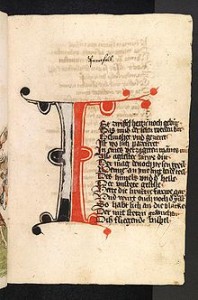Each afternoon I visited my mother at the hospital. Sometimes we spoke, sometimes we didn’t. She developed a craving for ginger ale. Sometimes she just slept. I often sat in her room while she was asleep, working on my Regents Exam schedule for George Washington High School. The Regents Exams were the high point of the academic year for both teachers and students. It was a week of tests for 4,000 pupils and 250 proctoring teachers, governed by rules made up by the Board of Regents and the United Federation of Teachers, my own union. Students in exam rooms had to be separated by a row of empty desks, which meant that you needed twice as many rooms as you normally required. No teacher could proctor more than two exams in a row. Exams had to get to their right rooms and returned to the right departments. It was all quite complicated, and to tell the truth, I thoroughly enjoyed making it all come out right. So, this was what I did while my mother slept in her hospital bed.
When my mother was awake, we talked. She expressed regret that this illness, this leukemia (which she knew to be deadly) had come up just as she was finally enjoying herself getting together with her friends, sitting on a park bench watching children play, and coming to my house to be involved with her own grandchildren. She definitely felt this was the wrong time for a terminal illness. When she felt a bit better, not being a passive person, she also trudged up and down the hallway, holding on to the IV drip stand, feeling that the exercise would be good for her and would help her recover.
She did get somewhat better, and although her doctor held out little hope, we were given a choice between placing her in a hospice and taking her home. Linda and I decided to take her home with us, because we felt it would be better for her, and more selfishly, it would also be better for the rest of our family. Our children would still be involved with their Grandma Cake and learn that dying is also a part of life. They would also learn that dying is quite natural, and not all that dreadful. Long term goal, I also someday didn’t want to die in a hospice.
We converted our dining room into Grandma’s room. We installed a hospital bed, an IV drip stand, and an oxygen tank. The dining room was selected because it was probably the least used room in the house, it was close to a bathroom and the kitchen, and it would also enable her to reach the front porch, which was a lovely place to sit, if she felt like it, and which she did quite often. Later she also took short walks, with the assistance of a walker, the length of the driveway. She believed in exercise and that it would somehow restore her to health. If there was anything she could do to help herself, she would do it.
Houses have memories. I felt my mother, even while dying, was contributing textured memories to our house on Woodside Avenue.






